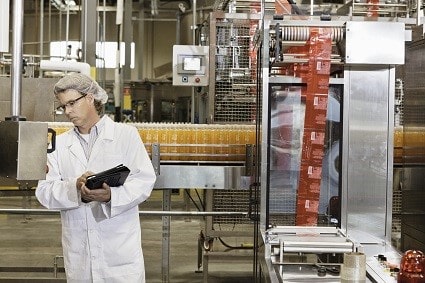3 Reasons Why 3-A Certification is Critical for Food Processors


For the food processors of today and yesteryear, 3-A sanitary standards aren’t anything new. In fact, 3-A has been around since the 1920s and, over time, has only strengthened its range, going far beyond its initial concentration of dairy to oversee a host of other food equipment and processing specialties. Today, 3-A certification encompasses the areas that so readily fall by the wayside in sanitary design – along with the very processes that support it.

As mentioned, 3-A was initially developed nearly a century ago as a way to create a sanitary standards practice for sanitarians, equipment fabricators, and other processor interest groups. Back then, the main focus was dairy, but ever since the FDA and USDA got involved in its mission, decades later, the reaches of the standards – as well as the standards themselves – have diversified.
Together, the FDA and the USDA partner with 3-A to make up 3-A Sanitary Standards, Inc. (3-A SSI). The partnership between these federal public health agencies and the long-standing 3-A is a powerful one; the trio works together to oversee existing standards and even helps to develop the latest in sanitary design and execution. Currently, 3-A offers sanitary design-based certificates, as well as the 3-A Process Certificate geared to assess and certify the practices of the food processor. In the words of 3-A, the 3-A Process Certificate “is intended for use by applicants that utilize a process conforming to the design, installation, or use criteria of a 3-A Accepted Practice.”
Now that you have a better idea of the history of 3-A SSI and how it works, let’s take a closer look at why it is so important for food processors everywhere.
Though you’d be hard-pressed to find those working in the fields of manufacturing or processing to enjoy, or even seek out, additional standards oversight, the supervision required under the 3-A Process Certificate is great for the health of businesses.
Processors, in particular, operate in such a way that their reputations are on the line any time contaminants are found in their products, no matter how innocuous they may be. This means that there is no wiggle room, so to speak, for the processor; if its movements are not streamlined to promote sanitary design elements, then it is them who will face the strict consequences enforced by adjoining 3-A agencies like the FDA and the USDA.
When a third-party verification (TPV) inspection is completed and the certificate is awarded, the processor can rest assured knowing that its equipment, as well as its processes, are keeping consumers as safe as possible. And, if the processor has issues obtaining a certificate due to faulty processes or equipment, it will receive guidance on how to best achieve compliance.
When food processors invest in 3-A certified processing equipment, they immediately benefit from the integrated sanitary design elements. Though these elements are vast and are usually dependent upon the equipment’s functionalities, all are designed to promote simple and thorough cleanings.
In the 3-A release, “Cleanability of Equipment and the Role of the 3-A Sanitary Standards,” we learn that the 3-A clusters equipment cleanability into four categories:
Though each varies in both commonality and frequency of use, the designated sanitary standards are designed to ensure that all pieces of equipment can become as immaculate as possible. This is done by assessing a host of factors, such as surface permeability, the effort required to disassemble equipment, and more. When processors invest in a piece of equipment that bears the 3-A stamp, they are given equipment that promotes cleanliness and comes along with a trusted process that ensures it.
Because 3-A Process Certification requires an on-site assessment from a TPV, processors must adequately train their employees and equipment operators on the building blocks of sanitary design. By getting hands-on experience with 3-A certified equipment, workers quickly develop a better understanding of cleanliness as it relates to the product, thus instilling good habits in the long run.
Smart food processors include 3-A-based training programs to help ready their workers for the TPV inspections, as well as how to proceed when equipment may have lost its sanitary efficacy.
To confirm that the processing equipment that you are using is, in fact, 3-A certified, demand to see a copy of the certificate from your supplier. Also, double-check your equipment’s certification status on the 3-A website. Remember, federal agencies like the FDA and USDA look to processors when sanitation is compromised – protect yourself and always steer clear of equipment manufacturers that cannot produce the proper documentation.
Our sales engineers are experts in automatic asset tracking, tagging and identification,a nd can answer all your questions. Get in touch now.
Lets Talk ›